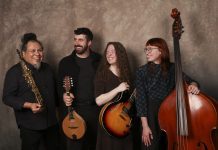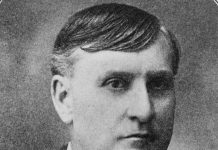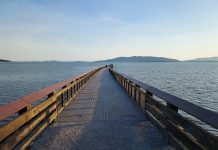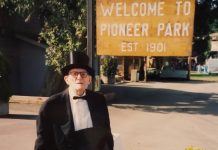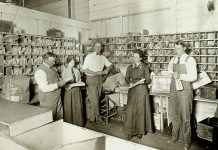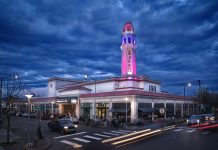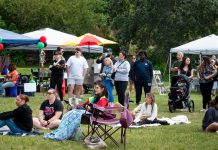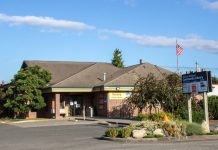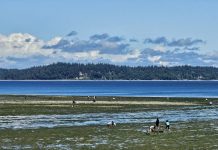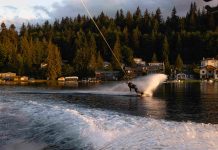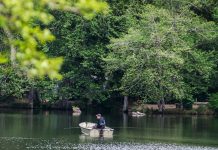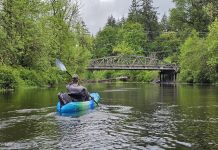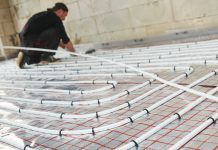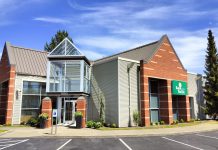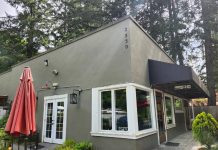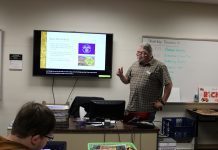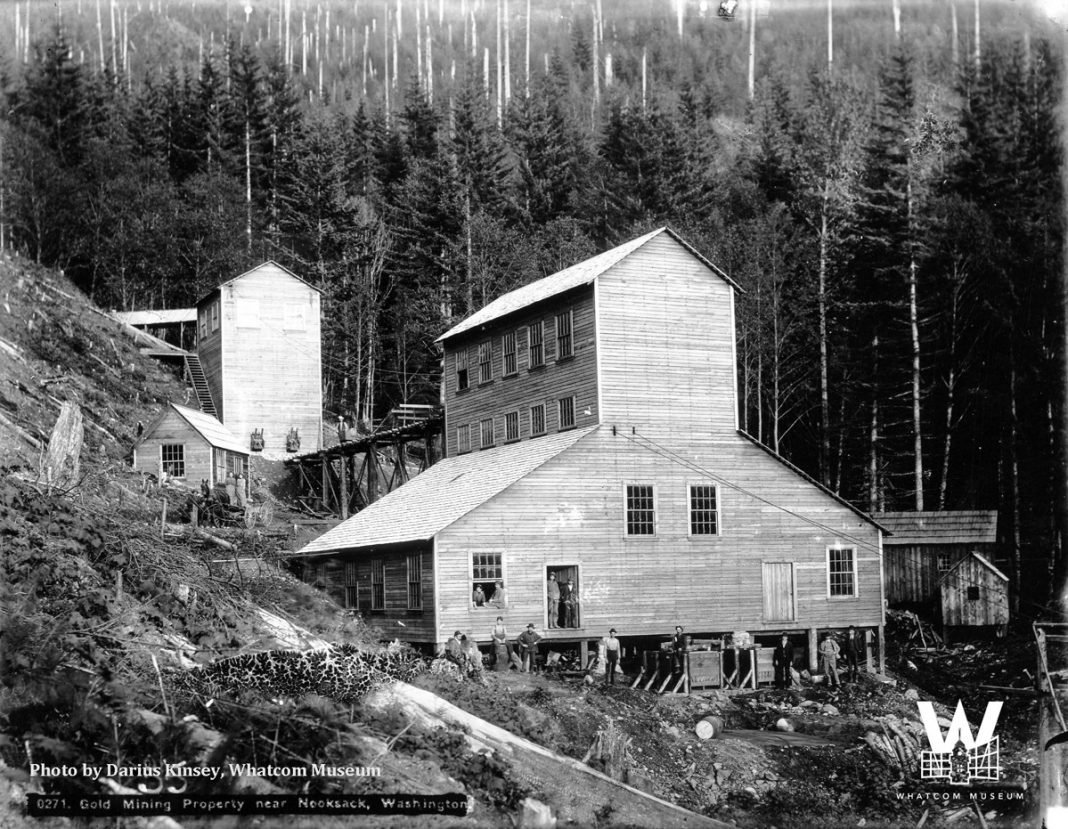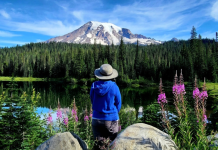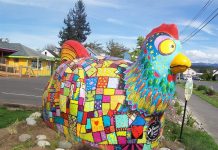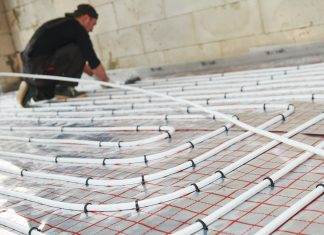The sign reading “Gold Mine Trail” could not look more out of place than beside a barbed-wire pasture fence and unassuming narrow trailhead just outside Nooksack. But this trail on Sumas Mountain conceals a different kind of gold in its hills: artifacts from a wayward mining operation and new growth slowly reclaiming them.
Gold Mine Trail features five creeks: Swift, Gold, Rankin, Hardin, and Jim. The opening stretches are muddy from spring to fall and overgrown in summer, requiring hiking boots. About one mile in, a loop emerges and results in a 3.5-mile roundtrip past landmarks well worth the switchbacks and mud. The loop’s north end ascends to a cabin 1,250 feet up, while the south end descends into a storied backdrop of mining history.
History and Mystery of the Nooksack Mining Company
Dreams of Gold: History of the Mount Baker Mining District, by Michael G. Impero, provides conflicting accounts on whether this trail’s mines had been an elaborate scam. U.S. mint records and geological surveys indicate that the mines never produced gold, as Sumas Mountain is too far west and low to have any.
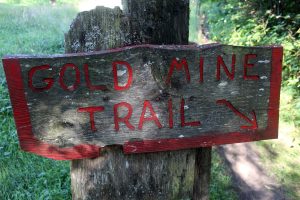
By all accounts, Nooksack Mining Company president C.F. Bernard and secretary/treasurer C.W. Swinehart staked eight claims around Swift Creek from 1899 to 1901. Before opening three adits, they discreetly constructed a stamp mill, building complex, and resort. The operation attracted 370 investors from as far away as Seattle, San Francisco, Florida, New York, and Ohio.
The mines closed suddenly in 1905, and a 1906 court process dissolved the Nooksack Mining Company and sold its property. The Whatcom Reveille newspaper supported the company from 1902 to 1904, only to cover its discharged miners’ disgruntlement afterward.
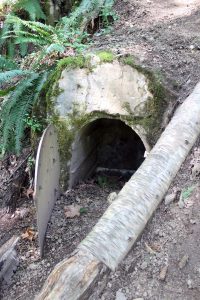
The “scam” anecdote holds that the Nooksack Mining Company had “salted” the mine, firing gold flecks from a shotgun. Allegedly, they defrauded investors by touring their representatives around a gold storage vault and gilded mine walls. The resort also featured “a hotel room, an elegant menu, a well-stocked bar, [and] a dance hall with a round oak floor and female companionship.” But when a miner exposed the ore’s barrenness, the story goes, the company “flew by night” with investors’ money.
However, a descendant of C.F. Bernard supplemented the book with Mrs. Bernard’s photographs and diary—and with them, a different story. The diary states that Denver engineers could not cost-efficiently extract gold from the ore, so “new management” voted out Bernard and Swinehart and the former left for a mine in Goldfield, Nevada.
Whatever the truth, the Nooksack Mining Company has become legendary among Gold Mine Trail visitors.
Nooksack Mine Ruins
The buildings are long gone, but Gold Mine Trail’s landscape still echoes its past.
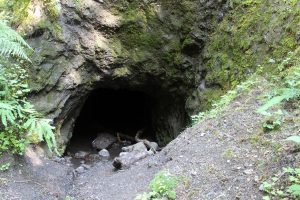
Roughly a mile and a half into the main trail, past the cabin fork, side trails descend into the mining camp. A rusted ore cart and other forsaken equipment lie beside the infamous vault embedded in the hillside. On the bank below, a dihedral rock wall from the old resort (popularly the hotel or dance hall) grows moss and evergreens.
The first of three adits branches off from the main trail shortly afterward. Gold Creek runs along the slope below, and a century’s sediment and standing water have flooded the adit. If you follow the main trail to a campground junction, signs will point you to the two higher adits southeast of the loop. The tunnels are so short that you can see the entrances from the ends.
Seeing the urban decay now, one can only imagine how the original sites looked whilie bustling with miners. However, hiking up to the trail’s present clearcuts and historic building makes the visualization easier.
Spectacular Mountain Views
Hikers can reach the cabin, Sumas Mountain Outpost, by following a signposted fork or the main trail’s looping end. The steep hike from the “Cabin” signpost climbs several hundred feet.
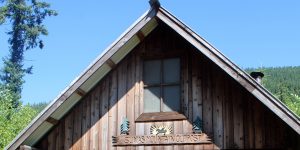
Named “Friendly Cabin” when John Friendly built it in 1891, the Sumas Mountain Outpost got its current name when the Whatcom Backcountry Horsemen renovated it through private donations in 2010. The exterior features a corral, outhouse, fire pit, flag, guestbook, and decorative horseshoes. The interior provides a trail map, stove, cabinet, and bunks. For hikers in need, it’s a friendly cabin, indeed.
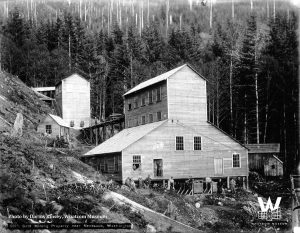
Parallel to a DNR logging road, the cabin trail provides a stunning view of the valley below. Ambitious hikers can brave Lost Lake Trail, a northeast branch off the loop, for an even higher view. It’s a treacherous climb of 1,000 feet in under a mile—but from 3,000 feet up, high in the summit’s wildflower meadow, you can see all of Whatcom County.
To hike Gold Mine Trail, follow South Pass Road from Nooksack to the dead end at Sealund Road. Park on the strip outside the private driveways, and the trailhead will be on your left. Today, just as a century before, visiting Sumas Mountain is an adventurous prospect.





